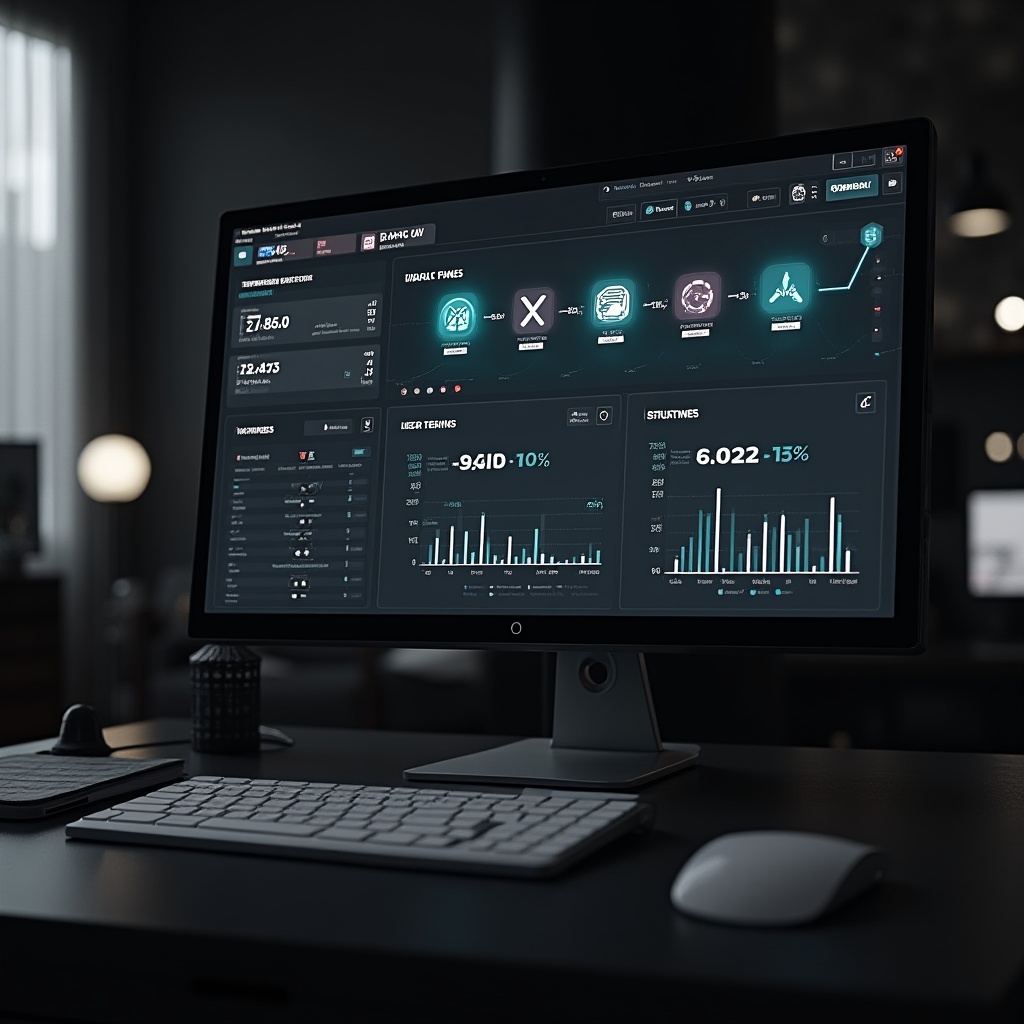Introduction to GMX v3 and “Sticky Liquidity”
Evolution from v2 to v3
GMX has been a standout decentralized perpetual exchange offering leveraged trading with unique liquidity incentives. In its v2 iteration, liquidity was fragmented across multiple isolated GM pools, requiring LPs to deposit separately into each token pair pool such as WETH/USDC or WBTC/ETH. This structure, while functional, led to inefficiencies, requiring LPs to actively manage several positions and exposing them to impermanent loss risks in isolated pools.
The transition to GMX v3 represents a substantial overhaul aimed at addressing these issues. Central to this upgrade are GMX Liquidity Vaults (GLVs), which pool liquidity from identical token pairs into single vaults. This consolidation is supported by the SHIFT algorithm, which dynamically reallocates liquidity to optimize fee generation and capital efficiency. The goal is to create a more sustainable and attractive ecosystem for liquidity providers.
“Sticky liquidity” in DeFi refers to liquidity that remains committed to a protocol over long periods, resisting market volatility and capital flight. It’s the lifeblood of any exchange, ensuring tight spreads, deep order books, and healthy protocol revenue. GMX’s v3 aims to foster such stickiness through redesigned incentives and capital-efficient mechanisms.
Key Motivations for v3 Incentive Redesign
The redesign emerges from several recognized shortcomings in v2. Fragmented liquidity limited capital efficiency, impermanent loss risk was high, and LPs had to manually reallocate assets to chase yield. GMX’s DAO sought to deepen liquidity pools, improve returns, and make participation less labor-intensive.
Incentives were also restructured to encourage longer-term commitment via veGMX multipliers. By locking GMX tokens, LPs amplify their rewards, promoting capital retention even through bearish markets. These changes are crafted to attract more LPs and maintain liquidity “stickiness” necessary for exchange health.
GMX Liquidity Vaults (GLVs): Core Mechanism
Structure of GLVs in v3
GLVs are designed to aggregate liquidity across all GM pools with identical long and short tokens. Instead of LPs splitting capital across individual GM pools, liquidity is pooled, providing deeper and more balanced exposure. The SHIFT algorithm dynamically rebalances the vault’s assets in response to utilization rates, fee generation, and open interest (OI) metrics.
For example, if one GM pool sees high trading activity, SHIFT reallocates liquidity towards it, increasing capital efficiency. Conversely, less active pools receive less capital, reducing wasted liquidity. This fluid management contrasts starkly with v2’s static, manual LP allocations.
Capital Efficiency and Fee Accrual
Capital efficiency improves as LPs can participate in multiple pools’ fee generation with a single vault token. SHIFT’s dynamic liquidity shifts maximize exposure to high-utilization pools. In v2, fee income was capped by individual pool volumes and often led to suboptimal capital deployment.
Moreover, GLVs allow LPs to capture a share of a broader spectrum of fees, including trading fees, borrowing fees, and liquidation fees. This diversified fee exposure potentially increases total yields and reduces income volatility compared to isolated pools.
Risk Parameters & Impermanent Loss Mitigation
GLVs introduce risk controls such as open interest caps per pool to avoid excessive leverage concentration. The diversified nature of GLVs mitigates impermanent loss because the liquidity is spread over correlated pools, smoothing price divergences.
The SHIFT algorithm’s constant rebalancing further reduces exposure to pools where asset prices may diverge sharply. This contrasts with v2 where LPs bore the full brunt of impermanent loss in individual GM pools.
Incentive Token Distribution & Emission Schedule
Epoch-Based Reward Structure
GMX continues to use a weekly epoch reward model, where LPs receive ARB token incentives proportional to their time-weighted average GLV balances. This model encourages consistent participation and discourages short-term deposit-and-withdraw behavior that undermines liquidity depth.
Epoch rewards are distributed to GLV holders, with the protocol allocating a fixed ARB emission amount each week. This steady, predictable distribution supports LPs in projecting their yields accurately.
veGMX Multipliers for Sticky Liquidity
A key innovation is the veGMX model, which incentivizes LPs to lock their GMX tokens for periods ranging from one week to 52 weeks. The longer the lock, the higher the multiplier, boosting ARB reward emissions by up to 3x.
This system creates alignment between LP interests and protocol health. Locked tokens reduce circulating supply and encourage holding, reducing sell pressure. LPs benefit from enhanced rewards, which encourages capital to stay invested, thereby fostering “sticky liquidity.”
Additional Migration Incentives
To ease the transition from v2 to v3, GMX offers migration incentives, including fee rebates and bonus ARB token distributions. Early migrating LPs receive these bonuses capped by total migrated liquidity. For example, on Arbitrum, rebates of up to 0.25% on fees and ARB token bonuses incentivized quick uptake.
These temporary incentives help offset migration costs such as impermanent loss and gas fees, smoothing the path to adopting v3’s improved design.
Yield Analysis: APR Projections & Fee Sharing
Historical v2 APR Benchmarks
In v2, APRs depended heavily on pool volumes and market activity. ETH/USDC pools on Arbitrum offered around 12% APR from fees, plus 10% from GMX incentives, totaling approximately 22%. Other pools varied widely, influenced by volatility and trading volume.
While decent, these APRs were capped by static liquidity allocations and manual LP management, limiting upside for cautious or less active LPs.
Projected v3 APR Components
v3’s APR is composed of three components:
- Trading Fees: Dynamic allocation via SHIFT targets high-utilization pools, increasing average fee yield beyond v2 static pools.
- Incentive Emissions: ARB rewards continue on an epoch basis, distributed to GLV holders.
- veGMX Multipliers: Locking GMX tokens increases incentive APR by up to 3x.
Together, these components offer LPs potentially higher and more stable returns. For example, active LPs with veGMX locks could see APRs exceeding 30% on popular pools during high volume epochs.
APR Comparison to Competing Protocols
Compared with Uniswap v3’s concentrated liquidity and epoch incentives, GMX v3’s GLVs offer a diversified and automated experience. Unlike Uniswap, LPs don’t need to manage tight ranges, reducing complexity and risk.
Sushiswap and Curve offer their own ve-token models, but GMX’s approach combines leveraged trading fee exposure with veGMX rewards, uniquely positioning it in yield and risk balance. Its risk controls and rebalancing provide an edge in impermanent loss mitigation.
Migration Path: From v2 GM Pools to v3 GLVs
Step-by-Step Migration Guide
Migrating liquidity involves:
- Withdraw v2 GM Tokens: LPs connect wallets and withdraw liquidity from GM pools.
- Deposit into GLVs: Tokens are deposited into GLVs matching the original pool pairs.
- Optional veGMX Lock: LPs lock GMX tokens via the veGMX contract to maximize rewards.
This migration is manual but supported by official tools and guides. Proper timing is advised to minimize gas costs.
Migration Incentive Timeline & Caps
Early migration incentives apply during a defined window, e.g., the first month post-v3 launch. Rewards are capped—on Arbitrum, for example, a 350,000 ARB cap applied to migration bonuses.
LPs should migrate early to maximize benefits; late migration results in forfeiting these bonuses but still earns standard v3 rewards.
Common Migration Pitfalls
Challenges include:
- Impermanent Loss Risk: Prices may move between withdrawal and deposit, causing losses.
- Gas Fees: Arbitrum and Avalanche fees fluctuate, potentially increasing migration cost.
- Reward Timing: Bonus emissions take time to arrive, requiring patience.
Careful migration planning, including batch transactions and monitoring gas, can minimize downsides.
Risk Management & Security Considerations
Smart-Contract Audits & Multisig Governance
GMX v3 contracts have undergone multiple audits, addressing vulnerabilities and optimizing logic. Governance multisig wallets control critical parameters, ensuring decentralized oversight.
These measures reduce risks of exploits or mismanagement, vital for LP confidence.
Price Impact & Slippage Protections
The SHIFT algorithm dynamically rebalances liquidity to avoid over-concentration, capping open interest to prevent drastic price impacts. LPs thus face reduced slippage risk, enhancing capital protection.
Compared to v2, where static pools sometimes suffered from poor liquidity distribution, v3’s approach is safer and more responsive.
Impermanent Loss Mitigation Strategies
GLV diversification spreads risk across correlated pools, smoothing asset price moves. Active SHIFT rebalancing continuously adjusts exposure to minimize loss windows.
LPs can also boost yields through veGMX locks, which act as an offset for impermanent loss.
Governance & Community Oversight
GMX DAO Proposals Influencing v3 Incentives
Community proposals govern reward curves, emission rates, and migration incentives. Recent votes favored veGMX multiplier adjustments and higher emission caps during launch phases.
Active participation ensures the protocol adapts responsibly and in LPs’ interest.
Transparency in Emission Schedules
GMX publishes weekly emission data, enabling LPs to forecast earnings precisely. Transparency builds trust and encourages sustained participation.
Future Upgrades & Layer-2 Expansion
Plans include expansions to Layer-2 chains such as Base and Optimism. Cross-chain incentive programs are under discussion, promising broader liquidity access and rewards.
These upgrades aim to keep GMX competitive as DeFi evolves.
Comparative Analysis: v3 vs. Alternative Liquidity Programs
Uniswap v3 Epoch Incentives vs. GMX v3 GLVs
Uniswap v3 requires LPs to manage concentrated ranges, exposing them to greater risk if prices move outside these bands. GMX’s GLVs simplify liquidity provision with auto-rebalancing and broader pool exposure.
While Uniswap may offer higher peak returns in narrow ranges, GMX prioritizes steady, manageable yields with lower user effort.
Sushiswap & Curve vs. GMX v3
Sushiswap and Curve utilize ve-token models (xSUSHI, veCRV) to align incentives. GMX’s veGMX is similar but tailored for perpetual trading pools with leveraged exposure.
GMX’s risk mitigation and diversified fee streams provide an alternative risk/reward profile attractive to LPs seeking both yield and capital preservation.
Trade-Offs: Capital Efficiency, Complexity, and Risk
GMX v3 offers higher capital efficiency via GLVs but introduces complexity with veGMX locking and SHIFT logic. LPs must understand these mechanisms to optimize participation.
Compared to simpler AMMs, GMX demands greater engagement but rewards it with enhanced returns and risk controls.
Key Metrics for Ongoing Monitoring
Total Value Locked (TVL) & Utilization Rates
TVL measures the total capital committed to GLVs. Sustained or growing TVL signals sticky liquidity and protocol health. Utilization rates indicate how actively deployed liquidity supports trading volume.
High utilization correlates with fee income, directly benefiting LPs.
Reward APR & veGMX Lock Ratios
Tracking average APRs helps LPs gauge profitability. veGMX lock ratios show the proportion of LPs committed long-term, often correlating with higher protocol stability and reward predictability.
Migration Adoption & Retention Rates
Monitoring the share of v2 LPs migrated to v3 and their retention duration reflects user satisfaction. Higher retention means LPs trust v3 incentives and mechanics.
Conclusion & Outlook
Assessing v3’s Ability to Attract Sticky Liquidity
GMX v3’s introduction of GLVs and veGMX multipliers offers a compelling case for attracting and retaining LPs. The protocol addresses v2 inefficiencies with automated rebalancing, risk controls, and incentivized long-term participation.
While challenges remain, including user education and competition, v3 is well-positioned to foster truly sticky liquidity.
Recommendations for Existing LPs
To maximize value, LPs should:
- Migrate promptly to GLVs to capitalize on incentives.
- Lock GMX tokens for veGMX multipliers to boost yields.
- Diversify across GLV pairs to spread risk.
- Stay informed on governance proposals and reward updates.
Future Research & Updates to Watch
LPs should watch for:
- Cross-chain expansions that broaden liquidity scope.
- Governance decisions modifying emission schedules.
- New Layer-2 integrations enhancing scalability.
- Competing protocol innovations, including Uniswap v4 and others.





